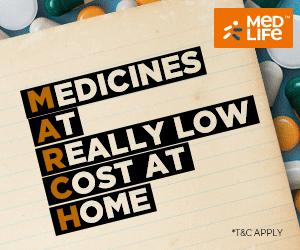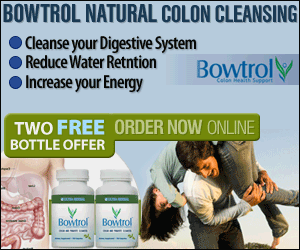 |
| What would happen if we Brush our Teeth With Activated Charcoal For A Week?, Image source: Creative Commons |
I Brushed My Teeth With Activated Charcoal For A Week
Charcoal is made from coal, hardwood, or softwood, peat, or even coconut shells. It becomes “activated charcoal” when high temperatures are mixed with an activating agent to expand its surface area. As it burns hotter, charcoal is considered superior to wood, and so, historically, it became the fuel utilized to smelt ores, with its earliest recorded use dating all the way back to 3750 BC.
The Egyptians and Sumerians produced charcoal for the reduction of copper, zinc and tin ores in the manufacture of bronze. It also happened that the Egyptians discovered a completely unrelated aspect of charcoal – it could be used as a preservative. Posts scorched black by fire, when used for construction along the River Nile, were found not to rot when buried in moist soils. Without realizing it, these ancient people began to capitalize on charcoal’s anti-bacterial and anti-fungal properties. That early innovation to preserve wood from rotting in wet situations continued down through the centuries, as other uses were discovered.
The first recorded use of charcoal for medicinal purposes comes from Egyptian papyri around 1500 BC when they appeared to have used charcoal to absorb unpleasant odors from putrefying wounds. Around 400 BC, Hippocrates, recorded using it for treating a wide range of ailments, including vertigo, anthrax, chlorosis, and epilepsy. Centuries later, in 1830, a professor drank a lethal dose of strychnine in front of his colleagues at the French Academy of Medicine – because he took the deadly poison with activated charcoal, he lived to tell the tale.
Activated Charcoal Uses Today
Today, the most well-known use of activated charcoal is as an antidote. It works by trapping chemicals and toxins in its millions of tiny pores. It doesn’t actually absorb toxins, its effectiveness is due to a chemical process known as adsorption, which is the reaction of elements like chemicals, toxins, and nutrients that are soaked up and assimilated in the bloodstream. It does this before chemicals and poisons can cause bodily harm. In fact, some emergency rooms use large doses of the stuff to counteract some types of poisoning. Activated charcoal, has been estimated to reduce poisonous substances by as much as 60% – working through the entire length of the stomach as well as the small and large intestines. Research has shown that it’s often more effective than stomach pumping.The porous surface of activated charcoal has a negative electric charge that causes positive charged toxins and gas to bond with it. While the nooks and crannies in activated charcoal are made through a heating process, this is NOT the type of charcoal that’s used in a barbecue grill – that type is filled with chemicals and toxins, and should never be consumed.
While activated charcoal may sound like something that doesn’t belong in or on your body either, there are many reasons it does, primarily due to its detoxifying effects. The Food and Drug Administration (FDA), rates it as a Category I, “safe and effective” for acute toxic poisoning, and it’s listed in the U.S. homeopathic pharmacopoeia as having “marked absorptive power of gases”. A 1981 study, reported in Prevention magazine, confirmed what Native Americans have believed for centuries – it cuts down on the amount of gas produced by beans and other gas-producing foods, as well as adsorbing the excess gas and bacteria that form the gas.
Activated charcoal powder has also become increasingly popular for removing stains from your teeth. While many people who have tooth stains from things like wine, coffee or tea think they have to spend an arm and a leg on professional teeth whitening methods to get them white again, there’s no reason to pay that high price tag when you can use activated charcoal instead. It actually helps whiten teeth by adsorbing plaque and microscopic compounds that can stain them, and may be the most cost-effective option out there that’s truly effective. Plus, it promotes better oral health by preventing gum disease, bad breath, and cavities too as it changes the pH balance in the mouth.
Using activated charcoal will temporarily make your teeth and mouth very black, it has the same effect as it does when it’s ingested: it pulls toxins from the mouth and removes stains. The black will wash away quickly, leaving your teeth clean and smooth as if you’ve just had a professional cleaning, and after doing this a few times, they’ll be noticeably whiter too.
Why You Should Use Activated Charcoal Made From Coconut Shells
As mentioned, activated charcoal can be made from a number of different substances, but coconut shells arguably produce the best results as it has a significant influence on the overall characteristics of the activated carbon, making it more suitable for certain uses than others, like eliminating tooth stains.The pore size distribution of the activated carbon, which also defines the available pore volume of a charcoal over three pore size regions, is a key indicator of a carbon’s ability to remove contaminants from water or air. It is within a carbon’s network of microscopic pores that absorption happens, and to effectively remove various impurities, it’s essential to use an activated carbon type with a predominant microporous region.
Coconut shell-based carbons also have a higher total pore volume, which further makes them superior, as compared to coal, wood, or peat-based carbons. And, finally, coconut shell-based activated carbon is typically produced via a steam activation process, rather than a chemical process which can leave chemical residue in the end product.
Using Activated Coconut Charcoal Powder For Better Teeth
Carbamide peroxide, used in many bleaching products, breaks down into hydrogen peroxide and urea, with hydrogen peroxide being the active bleaching agent. The most commonly observed side effects with these peroxide-based bleaching agents include tooth sensitivity and possible irritation of soft tissues like the gums. On rare occasions, irreversible tooth damage has even been reported.
Active Wow is a formula that whitens your teeth over time and will help eliminate stains from a number of causes, including coffee, wine, cigarettes, and more, all without the use bleach and those harmful side effects.
In addition to using the purest food-grade charcoal, Active Wow contains bentonite, which is outstanding for remineralizing the teeth because of its high mineral content in addition to enhancing the absorption of toxins. It also contains orange seed oil, a natural teeth whitener that has anti-inflammatory and antiseptic qualities.
How To Use Activated Coconut Charcoal Powder
It’s easy to use too. Simply follow these steps when you have it in hand:- Dip your toothbrush in a little water to make it slightly wet; remove any excess water by shaking.
- Dip the brush into the activated charcoal powder.
- Dab off any excess powder, keeping in mind that a little goes a long way.
- Brush your teeth like you normally would, for about 2 minutes.
- Rinse your mouth thoroughly to remove all of the charcoal powder, spitting directly into the sink, while letting the water run to keep the sink clean.What Happened When I Used Activated Charcoal for a Week
Obviously, this charcoal isn’t the type you grill with. Most people know activated charcoal as an antidote that can be used to counteract poison, but it’s said to do a whole lot more than that. The main reason I wanted to try it is that it’s supposed to whiten the teeth – but, I also ended up using it to prevent digestive problems too.
There are a lot of users who’ve claimed that activated charcoal powder can whiten the teeth after just one use, but I was skeptical. My teeth aren’t all that discolored, but they definitely could be whiter.
So, what happened?
First off, it was messy. I dipped my toothbrush into the powder and brushed away – my teeth and my toothbrush were black. I started to worry that it would be impossible to rinse it all out, and while it did take a little longer than usual, I managed to do it and my mouth felt fresh and clean.But Does activated charcoal makes teeth whiter?
I can’t say that they were. I really didn’t believe one time brushing with this stuff was going to work, but I held out hope that after a week it would.
I continued to brush diligently each night with the activated charcoal powder, five minutes at each go around, and learned something very important during the process: never, ever wear white when you’re brushing with it.
At the end of the week, I compared my teeth to a close up pic I’d taken before I’d begun. While my smile didn’t quite look like they’d been treated with peroxide, they were noticeably whiter.
Was it worth the mess? I’d say yes. I think I’ll keep it up for at least another week.
I continued to brush diligently each night with the activated charcoal powder, five minutes at each go around, and learned something very important during the process: never, ever wear white when you’re brushing with it.
At the end of the week, I compared my teeth to a close up pic I’d taken before I’d begun. While my smile didn’t quite look like they’d been treated with peroxide, they were noticeably whiter.
Was it worth the mess? I’d say yes. I think I’ll keep it up for at least another week.
















No comments:
Post a Comment